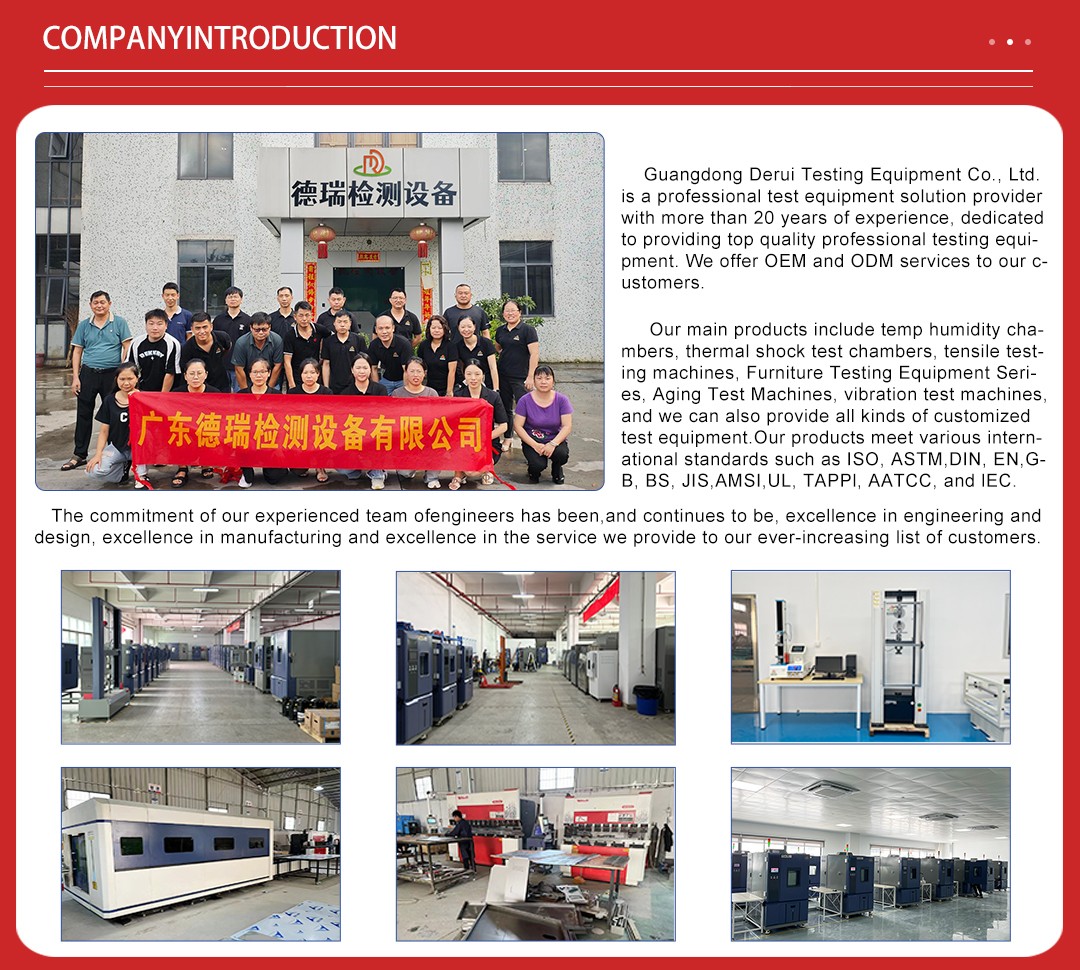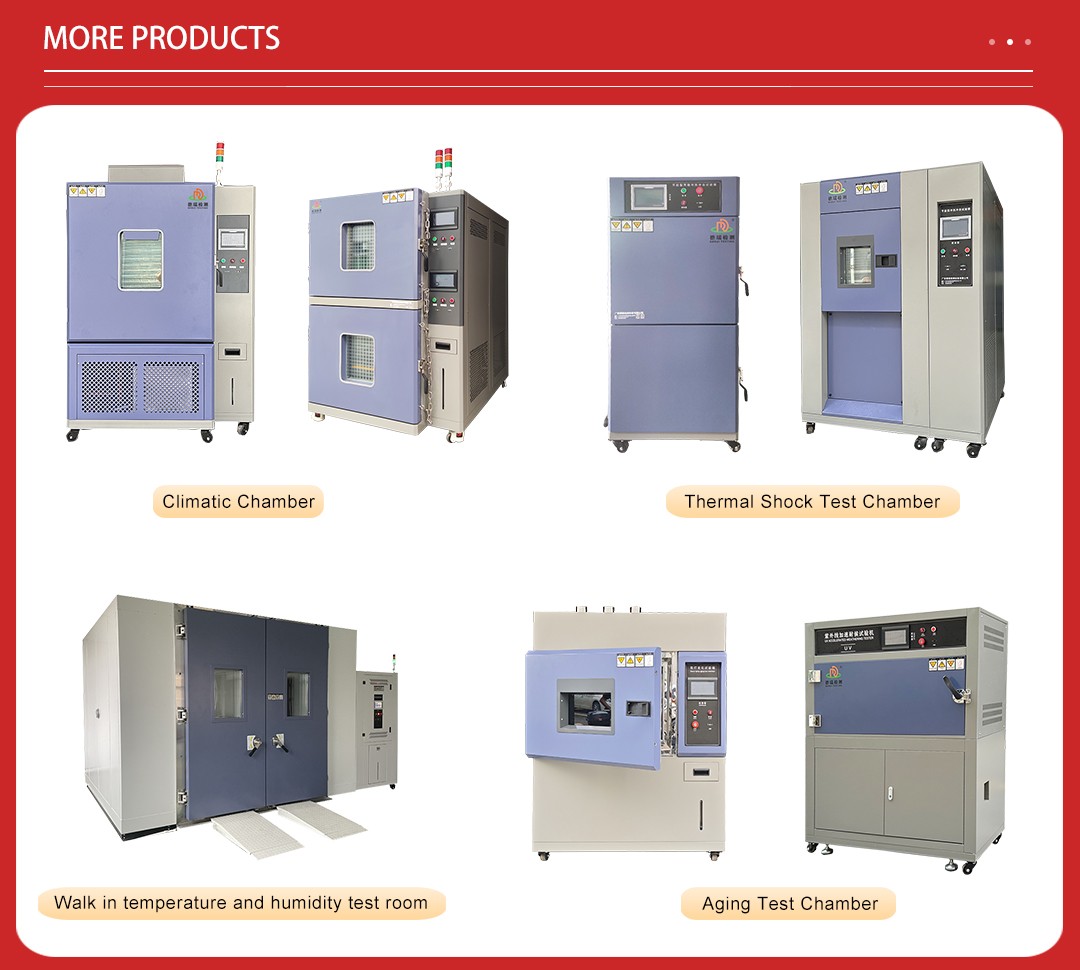
The Automotive Components Temperature Cycling Test Chamber is meticulously engineered with a focus on durability, precision, and flexibility. Its robust structure is crafted from high-grade, corrosion ...

The Automotive Components Temperature Cycling Test Chamber is meticulously engineered with a focus on durability, precision, and flexibility. Its robust structure is crafted from high-grade, corrosion-resistant materials such as stainless steel, ensuring longevity in harsh testing environments. The chamber's interior is designed to accommodate a wide range of component sizes, from small electronic modules to large assemblies like powertrains. It features a well-insulated double-wall construction that minimizes thermal transfer, maintaining the integrity of temperature cycles. Additionally, the chamber includes an ergonomic access door and transparent viewing window for easy monitoring without compromising the internal environment.

Temperature cycling test chambers are indispensable in various stages of automotive development:

To ensure reliability and repeatability, the temperature cycling test chamber adheres to a variety of international standards, including ISO 16750 (Road vehicles – Environmental conditions and testing for electrical and electronic equipment), IEC 60068-2-14 (Environmental testing – Part 2-14: Tests – Test N: Change of temperature), and SAE J1455 (Automotive Electronic Equipment Environmental Test Standards).

1. Wide Temperature Range: Capable of operating from -70°C (-94°F) to +150°C (+302°F), this range allows for comprehensive testing under extreme conditions.
5. Data Acquisition Systems: Equipped with state-of-the-art data logging and monitoring systems, these chambers provide real-time tracking and analysis of test parameters, facilitating detailed post-test evaluation.

| Model | DR-H204-100 | DR-H204-150 | DR-H204-225 |
| Internal dimension | 400*500*500mm | 500*600*500mm | 600*750*500mm |
| External dimension | 750*1536*1310mm | 750*1636*1410mm | 850*1786*1410mm |
| Temperature(℃) | -20/-40/-70 | -20/-40/-70 | -20/-40/-70 |
| Maximum Current(A) | 22,22,28 | 22,22,28 | 18,18,23 |
| Voltage(V) | Single-phase220V | Single-phase220V | Three-phase380V |
| Temp,range | 0℃;-20℃;-40℃;-70℃~+150℃ | ||
| Test Method | Pneumatic Operated Door Switch(two/three-zone) | ||
| Temp.Display Accuracy | 0.01℃ | ||
| Temp.uniformity | ≤±2.0℃ | ||
| Temp.deviation | ±0.5℃~±0.2℃(without load) | ||
| Heating speed | 1℃/min~20℃/min,can be customized | ||
| Cooling Speed | 1℃/min~20℃/min,can be customized | ||
| Humid.range | 20%~98%RH | ||
| Humid.resolution | 0.1% R.H. | ||
| Humid.uniformity | ±3%RH(without load) | ||
| Internal chamber material | Stainless steel 304 | ||
| External chamber material | Stainless steel/paint spray | ||

The temperature cycling test chamber operates by subjecting automotive components to a series of controlled temperature and humidity cycles. The process begins with heating or cooling the chamber to a specified setpoint using electric heaters or refrigeration units. Once the desired temperature is reached, the component is exposed to this environment for a predetermined duration. The cycle then transitions to the opposite extreme, either cooling or heating, depending on the initial state. This cycle repeats multiple times, simulating the thermal stresses that components may experience over their operational life. For tests involving humidity, the chamber introduces moisture through steam generators, creating a realistic wet environment.
Operation Procedure
5. Completion and Analysis: Upon completion, retrieve the component and analyze the results. Review logged data for any anomalies or performance issues.
Application Cases
4. Lighting Systems: Manufacturers test headlights and taillights to confirm their durability and functionality in diverse weather conditions, improving visibility and safety.
In summary, the Automotive Components Temperature Cycling Test Chamber is a vital tool for ensuring the quality and reliability of automotive components. Its advanced design, precise control, and adherence to industry standards make it an essential asset in the pursuit of automotive excellence.


Not search wanted products